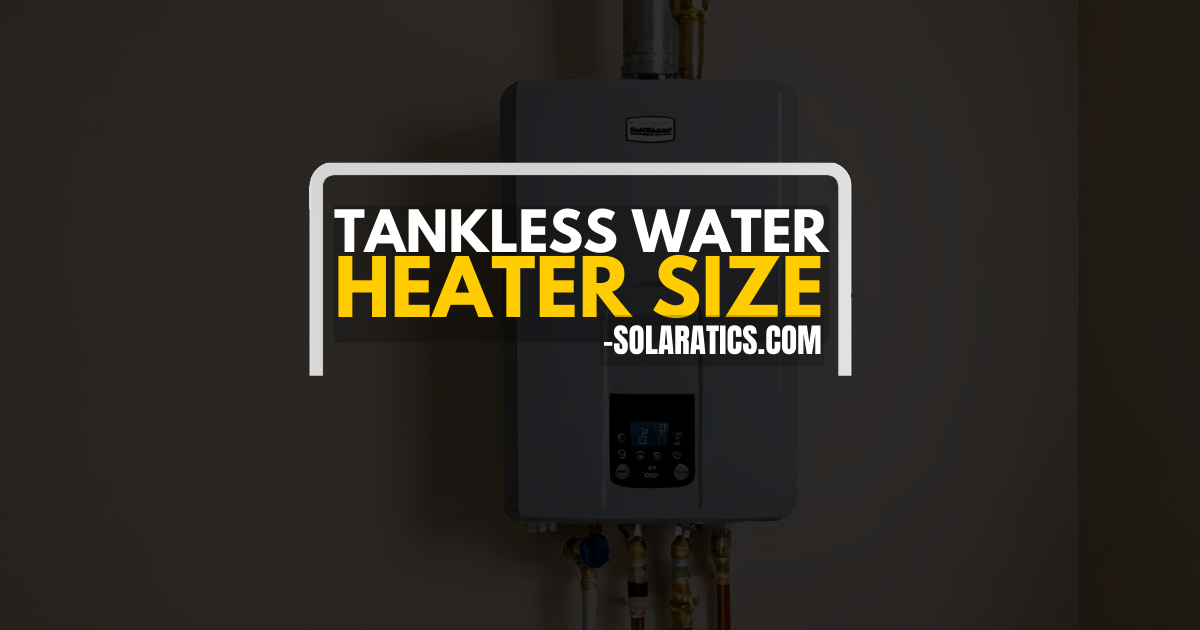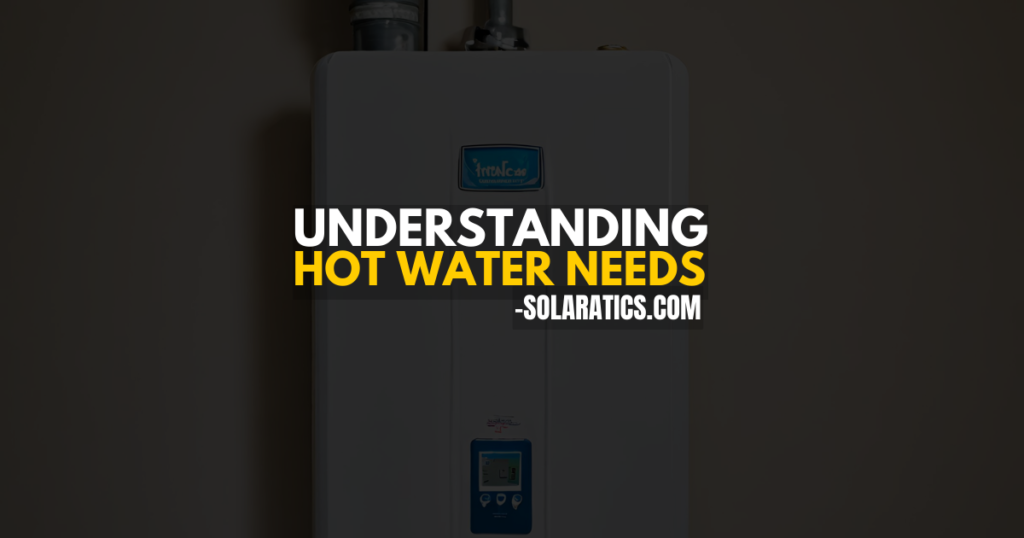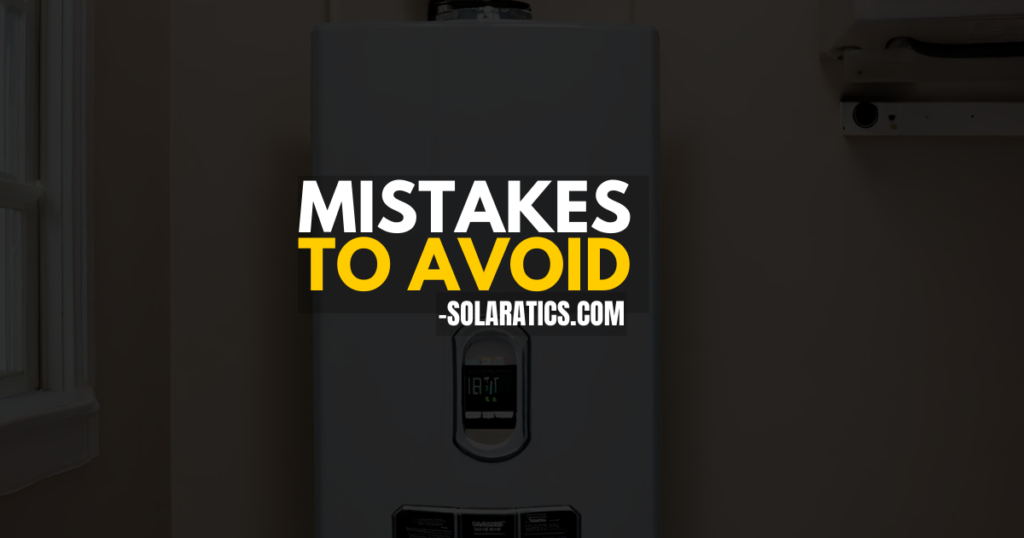What Size Tankless Water Heater Do I Need? (2024 Guide)

Choosing the right tankless water heater size can feel like deciphering ancient hieroglyphics. But fear not, fellow hot water warrior! This guide will equip you with the knowledge to vanquish lukewarm showers and conquer skyrocketing bills.
We’ll explore new advancements in tankless technology, delve into your hot water needs, and unveil common sizing mistakes to avoid. By the end, you’ll be a wizard of watt calculation and ready to choose the perfect tankless companion for your home.
Brief Overview of Tankless Water Heaters
Imagine a tiny superhero who conjures hot water instantly, like magic! That’s a tankless water heater. It heats water as you need it, flowing through a heat exchanger activated by your faucet or shower.
No more waiting for a tank to fill, no more wasted energy keeping gallons hot all day. Plus, they’re compact and space-saving, making them ideal for modern homes.
Importance of Selecting the Right Size
Think of sizing your tankless heater like choosing a superhero suit. Too small, and you’ll be shivering in your tights. Too big, and you’ll be lumbering around like Captain Overspend. Choosing the right size ensures you have enough hot water for everyone, even during peak demand times like morning showers or family bath rushes. Plus, the correct size keeps your energy bills under control, as the heater won’t work harder than it needs to.
Changes and Advancements in Tankless Water Heater Technology Since 2022
Since 2022, the tankless world has become even more exciting! New heaters boast compact designs, some fitting in a backpack. Artificial intelligence is entering the battlefield, optimizing performance based on your usage patterns.
And energy-saving features like variable flow modulation adjust the heating intensity to match your needs. With these advancements, finding the perfect size and efficiency is easier than ever.
Understanding Your Hot Water Needs

Just like superheroes have unique strengths and weaknesses, your hot water demands depend on several factors.
Factors Influencing Hot Water Demand
- Number of occupants: More ninjas, more hot water needed! A single hero might manage with a smaller heater, while a full Avengers team requires a powerhouse.
- Usage patterns: Are you a shower warrior or a bath enthusiast? Quick morning flurries or leisurely evening soaks? Understanding your peak demand times is key.
- Appliances and fixtures: Dishwashers, washing machines, and multiple hot water taps all have a thirst for the warm stuff. Consider their combined needs.
New Trends in Water Usage and Conservation
The battle for hot water efficiency isn’t just about size! Eco-friendly practices like shorter showers and low-flow fixtures are changing the game. Additionally, smart home integration allows you to control your water heater remotely and schedule usage, further optimizing your hot water supply.
With your needs in mind, let’s conquer the flow rate calculation!
Calculating Your Required Flow Rate
The flow rate is like the speed of your hot water superpower. It measures how many gallons of hot water your heater can deliver per minute. Choosing the right one ensures everyone gets their fill during peak demand.
Overview of Flow Rate and its Significance
Think of flow rate as the width of your hot water pipeline. A narrow pipe wouldn’t satisfy a whole team of thirsty heroes, right? Similarly, a small flow rate might leave you with a frustrating trickle when multiple water sources are running. Choosing the right flow rate ensures everyone gets a satisfying blast of hot water, even during peak times.
Determining Peak Hot Water Demand
For example, a shower might use 2.5 gallons per minute (GPM), while a dishwasher might be around 3 GPM. If you add a bathroom sink at 1 GPM, your peak demand for that scenario would be 6.5 GPM. Remember, this is just one example, and you’ll need to consider all your potential simultaneous hot water users to calculate your true peak demand.
New Methods and Tools for Accurate Flow Rate Calculations
Gone are the days of dusty charts and cryptic calculations! Technological reinforcements have arrived!
- Mobile apps: Several apps, like the Rheem Tankless Sizing Tool or Navien QuickSizer, allow you to input your home details and appliance usage to get a recommended flow rate.
- Advanced sensors: Some newer tankless models have built-in sensors that analyze your hot water usage patterns and adjust the flow rate dynamically to optimize performance and prevent oversizing.
With your flow rate mastered, let’s explore the amazing world of tankless tech advancements!
Technological Innovations in Tankless Water Heaters
The battlefield of hot water heating is getting even more exciting! Prepare to be amazed by these incredible advancements:
- Compact and efficient designs: Forget bulky beasts! Sleek, miniaturized tankless models are now available, fitting snugly in tight spaces without sacrificing power.
- Integration of artificial intelligence: Say hello to the hot water oracle! AI-powered heaters learn your usage patterns and adjust settings to optimize performance and minimize energy consumption.
- Energy-saving features and sustainability initiatives: Tankless heroes are going green! Variable flow modulation, eco-modes, and even solar-powered options are helping reduce energy use and environmental impact.
Common Mistakes to Avoid

Sizing a tankless heater isn’t just about flexing your math muscles. Avoiding these common mistakes will ensure your hot water victory:
- Underestimating hot water needs: Don’t be a low-flow villain! Undersizing your heater leads to lukewarm disappointment and frustrated shouts of “Who took all the hot water?!”
- Ignoring local climate considerations: Colder climates demand mightier heaters. Don’t underestimate the chill factor in your region!
- Not accounting for simultaneous use scenarios: Remember your peak demand! Imagine everyone wanting hot water at once, and plan accordingly.
Sizing Guidelines for Different Scenarios
Every hot water battle requires the right-sized champion. Here’s a quick guide:
- Single-family homes: For homes with 1-2 bathrooms, a flow rate of 6-8 GPM might be sufficient. For 3+ bathrooms, consider 8-12 GPM.
- Multi-family residences: Apartments or larger homes with multiple simultaneous users might need 12-16 GPM or even higher, depending on specific needs.
- Commercial applications: Restaurants, offices, and other commercial spaces have unique demands. Consult a professional to determine the ideal flow rate based on specific equipment and usage patterns.
- Hybrid systems and backup solutions: Consider pairing your tankless heater with a traditional tank for peak demand periods or emergencies.
The Future of Tankless Water Heater Technology
The hot water battlefield is evolving at lightning speed! Brace yourself for these exciting trends in 2024:
- Advanced water heating algorithms: Expect even smarter heaters that anticipate your needs and preheat water for specific times, further reducing energy waste.
- Integration with renewable energy sources: Solar-powered and hybrid tankless models are gaining ground, paving the way for sustainable hot water solutions.
Remember, environmental responsibility is a superpower we all share!
Installation and Maintenance Tips
Even the mightiest hot water heroes need proper care. Here are some tips for your tankless companion:
- Professional installation: Leave the complex plumbing to the experts! Proper installation ensures optimal performance and safety.
- Routine maintenance: Regular cleaning and filter changes keep your heater running smoothly and efficiently.
- Troubleshooting common issues: Learn basic troubleshooting steps for minor issues like error codes or unexpected shutdowns.
Conclusion
Conquering the hot water battlefield requires knowledge, preparation, and the right-sized tankless companion. By understanding your needs, choosing the correct flow rate, and considering technological advancements, you can find the perfect heating hero for your home.
Explore Related: 15 Cheap Ways To Block Heat From Windows in 2024
